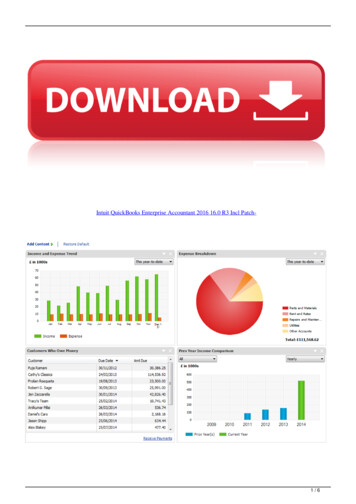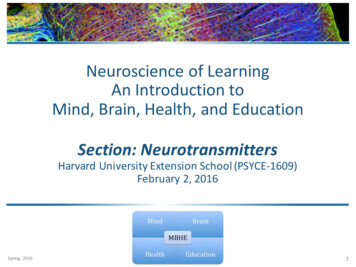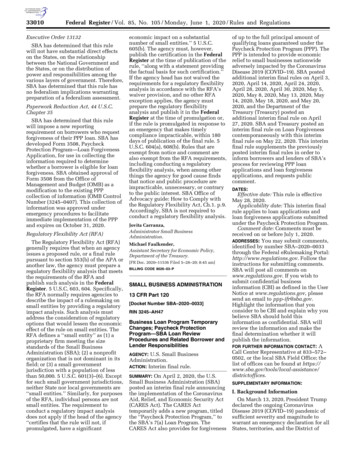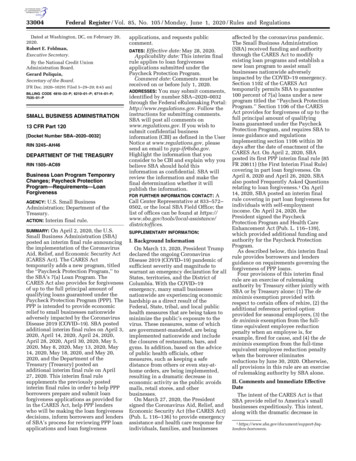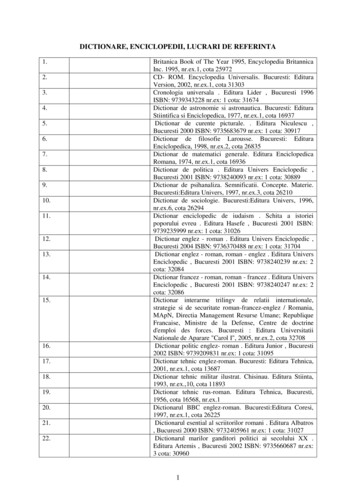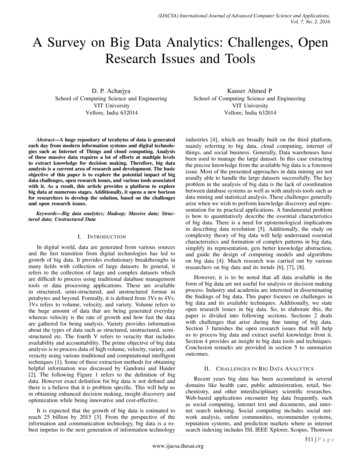
Transcription
(IJACSA) International Journal of Advanced Computer Science and Applications,Vol. 7, No. 2, 2016A Survey on Big Data Analytics: Challenges, OpenResearch Issues and ToolsD. P. AcharjyaKauser Ahmed PSchool of Computing Science and EngineeringVIT UniversityVellore, India 632014School of Computing Science and EngineeringVIT UniversityVellore, India 632014Abstract—A huge repository of terabytes of data is generatedeach day from modern information systems and digital technologies such as Internet of Things and cloud computing. Analysisof these massive data requires a lot of efforts at multiple levelsto extract knowledge for decision making. Therefore, big dataanalysis is a current area of research and development. The basicobjective of this paper is to explore the potential impact of bigdata challenges, open research issues, and various tools associatedwith it. As a result, this article provides a platform to explorebig data at numerous stages. Additionally, it opens a new horizonfor researchers to develop the solution, based on the challengesand open research issues.Keywords—Big data analytics; Hadoop; Massive data; Structured data; Unstructured DataI.I NTRODUCTIONIn digital world, data are generated from various sourcesand the fast transition from digital technologies has led togrowth of big data. It provides evolutionary breakthroughs inmany fields with collection of large datasets. In general, itrefers to the collection of large and complex datasets whichare difficult to process using traditional database managementtools or data processing applications. These are availablein structured, semi-structured, and unstructured format inpetabytes and beyond. Formally, it is defined from 3Vs to 4Vs.3Vs refers to volume, velocity, and variety. Volume refers tothe huge amount of data that are being generated everydaywhereas velocity is the rate of growth and how fast the dataare gathered for being analysis. Variety provides informationabout the types of data such as structured, unstructured, semistructured etc. The fourth V refers to veracity that includesavailability and accountability. The prime objective of big dataanalysis is to process data of high volume, velocity, variety, andveracity using various traditional and computational intelligenttechniques [1]. Some of these extraction methods for obtaininghelpful information was discussed by Gandomi and Haider[2]. The following Figure 1 refers to the definition of bigdata. However exact definition for big data is not defined andthere is a believe that it is problem specific. This will help usin obtaining enhanced decision making, insight discovery andoptimization while being innovative and cost-effective.It is expected that the growth of big data is estimated toreach 25 billion by 2015 [3]. From the perspective of theinformation and communication technology, big data is a robust impetus to the next generation of information technologyindustries [4], which are broadly built on the third platform,mainly referring to big data, cloud computing, internet ofthings, and social business. Generally, Data warehouses havebeen used to manage the large dataset. In this case extractingthe precise knowledge from the available big data is a foremostissue. Most of the presented approaches in data mining are notusually able to handle the large datasets successfully. The keyproblem in the analysis of big data is the lack of coordinationbetween database systems as well as with analysis tools such asdata mining and statistical analysis. These challenges generallyarise when we wish to perform knowledge discovery and representation for its practical applications. A fundamental problemis how to quantitatively describe the essential characteristicsof big data. There is a need for epistemological implicationsin describing data revolution [5]. Additionally, the study oncomplexity theory of big data will help understand essentialcharacteristics and formation of complex patterns in big data,simplify its representation, gets better knowledge abstraction,and guide the design of computing models and algorithmson big data [4]. Much research was carried out by variousresearchers on big data and its trends [6], [7], [8].However, it is to be noted that all data available in theform of big data are not useful for analysis or decision makingprocess. Industry and academia are interested in disseminatingthe findings of big data. This paper focuses on challenges inbig data and its available techniques. Additionally, we stateopen research issues in big data. So, to elaborate this, thepaper is divided into following sections. Sections 2 dealswith challenges that arise during fine tuning of big data.Section 3 furnishes the open research issues that will helpus to process big data and extract useful knowledge from it.Section 4 provides an insight to big data tools and techniques.Conclusion remarks are provided in section 5 to summarizeoutcomes.II.C HALLENGES IN B IG DATA A NALYTICSRecent years big data has been accumulated in severaldomains like health care, public administration, retail, biochemistry, and other interdisciplinary scientific researches.Web-based applications encounter big data frequently, suchas social computing, internet text and documents, and internet search indexing. Social computing includes social network analysis, online communities, recommender systems,reputation systems, and prediction markets where as internetsearch indexing includes ISI, IEEE Xplorer, Scopus, Thomson511 P a g ewww.ijacsa.thesai.org
(IJACSA) International Journal of Advanced Computer Science and Applications,Vol. 7, No. 2, 2016unprecedented challenge for researchers. It is becuase, existingalgorithms may not always respond in an adequate time whendealing with these high dimensional data. Automation of thisprocess and developing new machine learning algorithms toensure consistency is a major challenge in recent years. Inaddition to all these Clustering of large datasets that helpin analyzing the big data is of prime concern [11]. Recenttechnologies such as hadoop and mapReduce make it possibleto collect large amount of semi structured and unstructureddata in a reasonable amount of time. The key engineeringchallenge is how to effectively analyze these data for obtainingbetter knowledge. A standard process to this end is to transformthe semi structured or unstructured data into structured data,and then apply data mining algorithms to extract knowledge. Aframework to analyze data was discussed by Das and Kumar[12]. Similarly detail explanation of data analysis for publictweets was also discussed by Das et al in their paper [13].Fig. 1: Characteristics of Big DataReuters etc. Considering this advantages of big data it providesa new opportunities in the knowledge processing tasks forthe upcoming researchers. However oppotunities always followsome challenges.To handle the challenges we need to know various computational complexities, information security, and computationalmethod, to analyze big data. For example, many statisticalmethods that perform well for small data size do not scaleto voluminous data. Similarly, many computational techniquesthat perform well for small data face significant challenges inanalyzing big data. Various challenges that the health sectorface was being researched by much researchers [9], [10]. Herethe challenges of big data analytics are classified into fourbroad categories namely data storage and analysis; knowledgediscovery and computational complexities; scalability and visualization of data; and information security. We discuss theseissues briefly in the following subsections.A. Data Storage and AnalysisIn recent years the size of data has grown exponentiallyby various means such as mobile devices, aerial sensorytechnologies, remote sensing, radio frequency identificationreaders etc. These data are stored on spending much costwhereas they ignored or deleted finally becuase there is noenough space to store them. Therefore, the first challenge forbig data analysis is storage mediums and higher input/outputspeed. In such cases, the data accessibility must be on thetop priority for the knowledge discovery and representation.The prime reason is being that, it must be accessed easily andpromptly for further analysis. In past decades, analyst use harddisk drives to store data but, it slower random input/outputperformance than sequential input/output. To overcome thislimitation, the concept of solid state drive (SSD) and phrasechange memory (PCM) was introduced. However the avialablestorage technologies cannot possess the required performancefor processing big data.Another challenge with Big Data analysis is attributedto diversity of data. with the ever growing of datasets, datamining tasks has significantly increased. Additionally datareduction, data selection, feature selection is an essential taskespecially when dealing with large datasets. This presents anThe major challenge in this case is to pay more attention fordesigning storage sytems and to elevate efficient data analysistool that provide guarantees on the output when the datacomes from different sources. Furthermore, design of machinelearning algorithms to analyze data is essential for improvingefficiency and scalability.B. Knowledge Discovery and Computational ComplexitiesKnowledge discovery and representation is a prime issuein big data. It includes a number of sub fields such asauthentication, archiving, management, preservation, information retrieval, and representation. There are several tools forknowledge discovery and representation such as fuzzy set[14], rough set [15], soft set [16], near set [17], formalconcept analysis [18], principal component analysis [19] etc toname a few. Additionally many hybridized techniques are alsodeveloped to process real life problems. All these techniquesare problem dependent. Further some of these techniques maynot be suitable for large datasets in a sequential computer. Atthe same time some of the techniques has good characteristicsof scalability over parallel computer. Since the size of bigdata keeps increasing exponentially, the available tools maynot be efficient to process these data for obtaining meaningfulinformation. The most popular approach in case of laragedataset management is data warehouses and data marts. Datawarehouse is mainly responsible to store data that are sourcedfrom operational systems whereas data mart is based on a datawarehouse and facilitates analysis.Analysis of large dataset requires more computationalcomplexities. The major issue is to handle inconsistenciesand uncertainty present in the datasets. In general, systematicmodeling of the computational complexity is used. It may bedifficult to establish a comprehensive mathematical system thatis broadly applicable to Big Data. But a domain specific dataanalytics can be done easily by understanding the particularcomplexities. A series of such development could simulate bigdata analytics for different areas. Much research and surveyhas been carried out in this direction using machine learningtechniques with the least memory requirements. The basicobjective in these research is to minimize computational costprocessing and complexities [20], [21], [22].However, current big data analysis tools have poor performance in handling computational complexities, uncertainty,512 P a g ewww.ijacsa.thesai.org
(IJACSA) International Journal of Advanced Computer Science and Applications,Vol. 7, No. 2, 2016and inconsistencies. It leads to a great challenge to developtechniques and technologies that can deal computational complexity, uncertainty,and inconsistencies in a effective manner.C. Scalability and Visualization of DataThe most important challenge for big data analysis techniques is its scalability and security. In the last decadesresearchers have paid attentions to accelerate data analysis andits speed up processors followed by Moore’s Law. For theformer, it is necessary to develop sampling, on-line, and multiresolution analysis techniques. Incremental techniques havegood scalability property in the aspect of big data analysis. Asthe data size is scaling much faster than CPU speeds, there is anatural dramatic shift in processor technology being embeddedwith increasing number of cores [23]. This shift in processorsleads to the development of parallel computing. Real timeapplications like navigation, social networks, finance, internetsearch, timeliness etc. requires parallel computing.The objective of visualizing data is to present them moreadequately using some techniques of graph theory. Graphicalvisualization provides the link between data with proper interpretation. However, online marketplace like flipkart, amazon,e-bay have millions of users and billions of goods to sold eachmonth. This generates a lot of data. To this end, some companyuses a tool Tableau for big data visualization. It has capabilityto transform large and complex data into intuitive pictures. Thishelp employees of a company to visualize search relevance,monitor latest customer feeback, and their sentiment analysis.However, current big data visualization tools mostly have poorperformances in functionalities, scalability, and response intime.We can observe that big data have produced many challenges for the developments of the hardware and softwarewhich leads to parallel computing, cloud computing, distributed computing, visualization process, scalability. To overcome this issue, we need to correlate more mathematicalmodels to computer science.D. Information SecurityIn big data analysis massive amount of data are correlated,analyzed, and mined for meaningful patterns. All organizationshave different policies to safe guard their sensitive information.Preserving sensitive information is a major issue in big dataanalysis. There is a huge security risk associated with big data[24]. Therefore, information security is becoming a big dataanalytics problem. Security of big data can be enhanced byusing the techniques of authentication, authorization, and encryption. Various security measures that big data applicationsface are scale of network, variety of different devices, real timesecurity monitoring, and lack of intrusion system [25], [26].The security challenge caused by big data has attracted theattention of information security. Therefore, attention has tobe given to develop a multi level security policy model andprevention system.Although much research has been carried out to securebig data [25] but it requires lot of improvement. The majorchallenge is to develop a multi-level security, privacy preserveddata model for big data.III.O PEN R ESEARCH I SSUES IN B IG DATA A NALYTICSBig data analytics and data science are becoming theresearch focal point in industries and academia. Data scienceaims at researching big data and knowledge extraction fromdata. Applications of big data and data science include information science, uncertainty modeling, uncertain data analysis,machine learning, statistical learning, pattern recognition, datawarehousing, and signal processing. Effective integration oftechnologies and analysis will result in predicting the futuredrift of events. Main focus of this section is to discuss openresearch issues in big data analytics. The research issuespertaining to big data analysis are classified into three broadcategories namely internet of things (IoT), cloud computing,bio inspired computing, and quantum computing. However itis not limited to these issues. More research issues related tohealth care big data can be found in Husing Kuo et al. paper[9].A. IoT for Big Data AnalyticsInternet has restructured global interrelations, the art ofbusinesses, cultural revolutions and an unbelievable numberof personal characteristics. Currently, machines are getting inon the act to control innumerable autonomous gadgets viainternet and create Internet of Things (IoT). Thus, appliancesare becoming the user of the internet, just like humans withthe web browsers. Internet of Things is attracting the attentionof recent researchers for its most promising opportunitiesand challenges. It has an imperative economic and societalimpact for the future construction of information, network andcommunication technology. The new regulation of future willbe eventually, everything will be connected and intelligentlycontrolled. The concept of IoT is becoming more pertinentto the realistic world due to the development of mobile devices, embedded and ubiquitous communication technologies,cloud computing, and data analytics. Moreover, IoT presentschallenges in combinations of volume, velocity and variety.In a broader sense, just like the internet, Internet of Thingsenables the devices to exist in a myriad of places and facilitatesapplications ranging from trivial to the crucial. Conversely, it isstill mystifying to understand IoT well, including definitions,content and differences from other similar concepts. Severaldiversified technologies such as computational intelligence,and big-data can be incorporated together to improve thedata management and knowledge discovery of large scaleautomation applications. Much research in this direction hasbeen carried out by Mishra, Lin and Chang [27].Knowledge acquisition from IoT data is the biggest challenge that big data professional are facing. Therefore, it isessential to develop infrastructure to analyze the IoT data. AnIoT device generates continuous streams of data and the researchers can develop tools to extract meaningful informationfrom these data using machine learning techniques. Understanding these streams of data generated from IoT devices andanalysing them to get meaningful information is a challengingissue and it leads to big data analytics. Machine learningalgorithms and computational intelligence techniques is theonly solution to handle big data from IoT prospective. Keytechnologies that are associated with IoT are also discussed inmany research papers [28]. Figure 2 depicts an overview ofIoT big data and knowledge discovery process.513 P a g ewww.ijacsa.thesai.org
(IJACSA) International Journal of Advanced Computer Science and Applications,Vol. 7, No. 2, 2016Fig. 2: IoT Big Data Knowledge DiscoveryKnowledge exploration system have originated from theories of human information processing such as frames, rules,tagging, and semantic networks. In general, it consists offour segments such as knowledge acquisition, knowledgebase, knowledge dissemination, and knowledge application.In knowledge acquisition phase, knowledge is discoveredby using various traditional and computational intelligencetechniques. The discovered knowledge is stored in knowledgebases and expert systems are generally designed based on thediscovered knowledge. Knowledge dissemination is importantfor obtaining meaningful information from the knowledgebase. Knowledge extraction is a process that searches documents, knowledge within documents as well as knowledgebases. The final phase is to apply discovered knowledge invarious applications. It is the ultimate goal of knowledgediscovery. The knowledge exploration system is necessarilyiterative with the judgement of knowledge application. Thereare many issues, discussions, and researches in this area ofknowledge exploration. It is beyond scope of this surveypaper. For better visualization, knowledge exploration systemis depicted in Figure 3.infrastructures that are hidden in virtualization software makesystems to behave like a true computer, but with the flexibilityof specification details such as number of processors, diskspace, memory, and operating system. The use of these virtualcomputers is known as cloud computing which has been oneof the most robust big data technique. Big Data and cloudcomputing technologies are developed with the importance ofdeveloping a scalable and on demand availability of resourcesand data. Cloud computing harmonize massive data by ondemand access to configurable computing resources throughvirtualization techniques. The benefits of utilizing the Cloudcomputing include offering resources when there is a demandand pay only for the resources which is needed to developthe product. Simultaneously, it improves availability and costreduction. Open challenges and research issues of big dataand cloud computing are discussed in detail by many researchers which highlights the challenges in data management,data variety and velocity, data storage, data processing, andresource management [29], [30]. So Cloud computing helpsin developing a business model for all varieties of applicationswith infrastructure and tools.Big data application using cloud computing should supportdata analytic and development. The cloud environment shouldprovide tools that allow data scientists and business analysts tointeractively and collaboratively explore knowledge acquisitiondata for further processing and extracting fruitful results.This can help to solve large applications that may arise invarious domains. In addition to this, cloud computing shouldalso enable scaling of tools from virtual technologies intonew technologies like spark, R, and other types of big dataprocessing techniques.Big data forms a framework for discussing cloud computing options. Depending on special need, user can go to themarketplace and buy infrastructure services from cloud serviceproviders such as Google, Amazon, IBM, software as a service(SaaS) from a whole crew of companies such as NetSuite,Cloud9, Jobscience etc. Another advantage of cloud computingis cloud storage which provides a possible way for storing bigdata. The obvious one is the time and cost that are needed toupload and download big data in the cloud environment. Else,it becomes difficult to control the distribution of computationand the underlying hardware. But, the major issues are privacyconcerns relating to the hosting of data on public servers,and the storage of data from human studies. All these issueswill take big data and cloud computing to a high level ofdevelopment.C. Bio-inspired Computing for Big Data AnalyticsFig. 3: IoT Knowledge Exploration SystemB. Cloud Computing for Big Data AnalyticsThe development of virtualization technologies have madesupercomputing more accessible and affordable. ComputingBio-inspired computing is a technique inspired ny natureto address complex real world problems. Biological systemsare self organized without a central control. A bio-inspiredcost minimization mechanism search and find the optimaldata service solution on considering cost of data managementand service maintenance. These techniques are developed bybiological molecules such as DNA and proteins to conductcomputational calculations involving storing, retrieving, andprocessing of data. A significant feature of such computingis that it integrates biologically derived materials to performcomputational functions and receive intelligent performance.These systems are more suitable for big data applications.514 P a g ewww.ijacsa.thesai.org
(IJACSA) International Journal of Advanced Computer Science and Applications,Vol. 7, No. 2, 2016Huge amount of data are generated from variety of resourcesacross the web since the digitization. Analyzing these dataand categorizing into text, image and video etc will requirelot of intelligent analytics from data scientists and big dataprofessionals. Proliferations of technologies are emerging likebig data, IoT, cloud computing, bio inspired computing etcwhereas equilibrium of data can be done only by selecting rightplatform to analyze large and furnish cost effective results.For example Dremel and Apache Drill are the big data platforms that support interactive analysis. These tools help us indeveloping the big data projects. A fabulous list of big datatools and techniques is also discussed by much researchers [6],[34]. The typical work flow of big data project discussed byHuang et al is highlighted in this section [35] and is depictedin Figure 4.Bio-inspired computing techniques serve as a key role inintelligent data analysis and its application to big data. Thesealgorithms help in performing data mining for large datasetsdue to its optimization application. The most advantage is itssimplicity and their rapid concergence to optimal solution [31]while solving service provision problems. Some applications tothis end using bio inspired computing was discussed in detailby Cheng et al [32]. From the discussions, we can observe thatthe bio-inspired computing models provide smarter interactions, inevitable data losses, and help is handling ambiguities.Hence, it is believed that in future bio-inspired computing mayhelp in handling big data to a large extent.Fig. 4: Workflow of Big Data ProjectD. Quantum Computing for Big Data AnalysisA quantum computer has memory that is exponentiallylarger than its physical size and can manipulate an exponentialset of inputs simultaneously [33]. This exponential improvement in computer systems might be possible. If a real quantumcomputer is available now, it could have solved problemsthat are exceptionally difficult on recent computers, of coursetoday’s big data problems. The main technical difficulty inbuilding quantum computer could soon be possible. Quantumcomputing provides a way to merge the quantum mechanics toprocess the information. In traditional computer, informationis presented by long strings of bits which encode either azero or a one. On the other hand a quantum computer usesquantum bits or qubits. The difference between qubit and bitis that, a qubit is a quantum system that encodes the zero andthe one into two distinguishable quantum states. Therefore,it can be capitalized on the phenomena of superposition andentanglement. It is because qubits behave quantumly. Forexample, 100 qubits in quantum systems require 2100 complexvalues to be stored in a classic computer system. It means thatmany big data problems can be solved much faster by largerscale quantum computers compared with classical computers.Hence it is a challenge for this generation to built a quantumcomputer and facilitate quantum computing to solve big dataproblems.IV.T OOLS FOR BIG DATA PROCESSINGLarge numbers of tools are available to process big data. Inthis section, we discuss some current techniques for analyzingbig data with emphasis on three important emerging toolsnamely MapReduce, Apache Spark, and Storm. Most of theavailable tools concentrate on batch processing, stream processing,and interactive analysis. Most batch processing toolsare based on the Apache Hadoop infrastructure such as Mahoutand Dryad. Stream data applications are mostly used for realtime analytic. Some examples of large scale streaming platformare Strom and Splunk. The interactive analysis process allowusers to directly interact in real time for their own analysis.A. Apache Hadoop and MapReduceThe most established software platform for big data analysis is Apache Hadoop and Mapreduce. It consists of hadoopkernel, mapreduce, hadoop distributed file system (HDFS)and apache hive etc. Map reduce is a programming modelfor processing large datasets is based on divide and conquermethod. The divide and conquer method is implemented in twosteps such as Map step and Reduce Step. Hadoop works ontwo kinds of nodes such as master node and worker node. Themaster node divides the input into smaller sub problems andthen distributes them to worker nodes in map step. Thereafterthe master node combines the outputs for all the subproblemsin reduce step. Moreover, Hadoop and MapReduce works asa powerful software framework for solving big data problems.It is also helpful in fault-tolerant storage and high throughputdata processing.B. Apache MahoutApache mahout aims to provide scalable and commercialmachine learning techniques for large scale and intelligent dataanalysis applications. Core algorithms of mahout includingclustering, classification, pattern mining, regression, dimensionalty reduction, evolutionary algorithms, and batch basedcollaborative filtering run on top of Hadoop platform throughmap reduce framework. The goal of mahout is to build avibrant, responsive, diverse community to facilitate discussionson the project and potential use cases. The basic objectiveof Apache mahout is to provide a tool for elleviating bigchallenges. The different companies those who have implemented scalable machine learning algorithms are Google, IBM,Amazon, Yahoo, Twitter, and facebook [36].C. Apache SparkApache spark is an open source big data processing framework built for speed processing, and sophisticated analytics.515 P a g ewww.ijacsa.thesai.org
(IJACSA) International Journal of Advanced Computer Science and Applications,Vol. 7, No. 2, 2016It is easy to use and was originally developed in 2009 in UCBerkeleys AMPLab. It was open sourced in 2010 as an Apacheproject. Spark lets you quickly write applications in java, scala,or python. In addition to map reduce operations, it supportsSQL queries, streaming data, machine learning, and graph dataprocessing. Spark runs on top of existing hadoop distributedfile system (HDFS) infrastructure to provide enhanced andadditional functionality. Spark consists of components namelydriver program, cluster manager and worker nodes. The driverprogram serves as the starting point of execution of an application on the spark cluster. The cluster manager allocates theresources and the worker nodes to do the data processing inthe form of tasks. Each application will have a set of processescalled executors that are responsible for executing the tasks.The major advantage is that it provides support for deployingspark applications in an existing hadoop clusters. Figure 5depicts the architecture diagram of Apache Spark. The variousfeatures of Apache Spark are listed below:D. DryadIt is another popular programming model for implementingparallel and distributed programs for handling large contextbases on dataflow graph. It consists of a cluster of computingnod
researchers on big data and its trends [6], [7], [8]. However, it is to be noted that all data available in the form of big data are not useful for analysis or decision making process. Industry and academia are interested in disseminating the findings of big data. This paper focuses on challenges i






